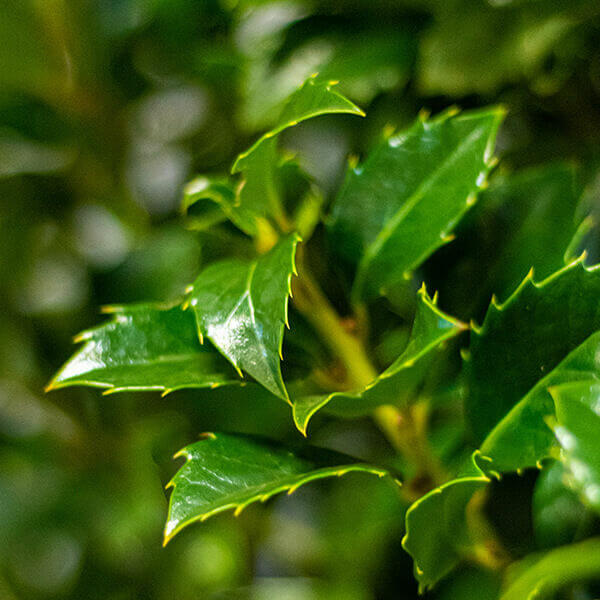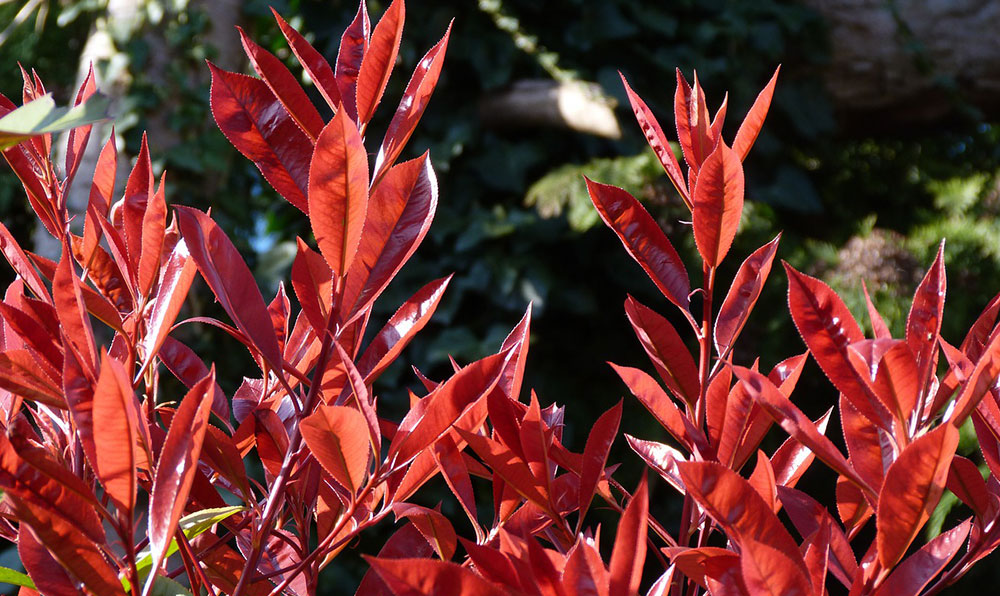Fast-growing Hedge Plants
Improve your garden's attraction with lavish hedge ranges such as Yew (Taxus), Thuja, Laurel, Photinia, and Bamboo, celebrated for their structural integrity and ecological advantages.
Yew and Thuja offer evergreen coverage and winter season resilience, while Laurel uses rapid growth and broad, aromatic leaves.
Photinia adds seasonal appeal with its lively red foliage, and Bamboo lends a low-maintenance, serene atmosphere.
These hedges enhance air quality, decrease sound, and develop tranquil, private spaces.
Appropriate planting, spacing, and maintenance guarantee energetic growth and environmental consistency.
Check out how these lush varieties can elevate your garden's appeal and wellness.
Key Takeaways
Change Your Garden With Lush Hedge Ranges
- Select Yew for its dense, evergreen growth and unequaled longevity.
- Choose Laurel for its quick development and broad leaves, ensuring quick privacy.
- Select Photinia for its lively seasonal foliage, which turns a striking dark red.
- Make use of Bamboo for a low-maintenance, winter-hardy hedge with visual appeal.
- Area plants 2-3 per meter and prune regularly for optimal growth and health.
Popular Hedge Plants
When transforming a garden with lush hedge varieties, it's important to consider popular hedge plants such as Yew, Thuja, Laurel, and Photinia due to their distinct qualities and advantages.
Yew (Taxus) is highly esteemed for its longevity and dense, green growth, making it a prime choice for enduring landscapes.
Thuja is noted for its evergreen foliage and robust winter season strength.
Photinia adds seasonal vibrancy with red leaves that darken in time, creating dynamic visual appeal.
Laurel offers rapid development and aromatic, broad leaves, suitable for quick privacy.
Additionally, Bamboo is an excellent option for atmosphere, providing a low-maintenance, winter-hardy choice that enhances the garden's visual with its classy, swaying walking canes.
These selections cater to a range of horticultural requirements and preferences.
Benefits of Garden Hedges
Garden hedges use a plethora of advantages, making them a valuable addition to any landscape. These natural barriers are cost-effective to carry out and supply considerable wind protection, boosting air flow and contributing to sound reduction. The thick foliage of hedges like Thuja and Beech guarantees privacy by blocking exposure, producing a secluded and tranquil environment.
Hedges likewise play a vital function in microclimate policy, offering a stable environment that fosters plant development and decreases temperature level changes. Their elaborate leaf structures filter pollutants, improving air quality and adding to a much healthier garden environment.
Furthermore, hedges master noise decrease, taking in and deflecting acoustic waves to lower ambient noise levels. This dual performance of providing both acoustic and visual privacy improves the overall serenity and visual appeal of any garden.
Planting and Maintenance Tips
For an effective hedge, careful preparation of the planting area is important. Ensure the soil has appropriate pH and drain to support strong root advancement.
Space the plants appropriately for the picked types. Water the hedge frequently during its preliminary development phase, adjusting as needed with seasonal modifications.
Carry out a systematic insect control and disease avoidance method, using organic or chemical treatments when needed. Frequently inspect for aphids, mites, and fungal infections.
Apply mulch to keep wetness and reduce weeds. Seasonal pruning promotes thick development and air blood circulation, essential for plant health.
Following these guidelines will help you cultivate a dynamic, well-kept hedge that improves the charm of your garden.
Spacing and Cutting Standards
Spacing and Cutting Standards
Appropriate spacing and cutting are essential for cultivating healthy, visually appealing hedges. Adequate spacing guarantees each plant gets adequate nutrients, light, and air flow.
Follow these standards for optimum hedge maintenance:
- Spacing: Position hedge plants 2-3 plants per meter to encourage robust growth.
- Pruning Techniques: Regular pruning is important for maintaining desired hedge height and shape. Trim new growth in summer and cut down older wood during winter.
- Seasonal Care: Adjust cutting methods and schedules according to seasonal requirements to make sure plant health.
- Hedge Height: Regularly monitor and trim to preserve the preferred hedge height and accomplish consistent looks.
Abiding by these actions will ensure your hedge prospers, improving both the appeal and functionality of your garden.
Choosing the Right Hedge
Picking the Right Hedge
Choosing the appropriate hedge includes examining elements such as mature height, foliage density, and ecological durability. Successful hedge plant choice requires comprehending each species' growth qualities and site-specific adaptability.
For instance, Yew (Taxus) provides exceptional durability and dense development, while Thuja is noteworthy for its winter resilience. In addition, considering upkeep requirements is important; fast-growing types like Laurel or Privet demand routine trimming, whereas low-maintenance alternatives like Bamboo or Ivy might be more effective for those seeking very little upkeep.
Ecological factors such as soil type, light accessibility, and wetness conditions ought to likewise guide the selection procedure. This careful technique ensures the selected hedges will grow, providing both visual and practical benefits to the garden landscape.
Shipment and Planting Advice
To ensure your hedge plants prosper, they should be delivered by specialized carriers and planted promptly upon arrival.
Follow these important actions for effective planting:
- Soil Preparation: Enrich the soil with organic matter to improve drain and nutrient material.
- Planting Depth: Develop a trench twice the width and equal to the depth of the root ball.
- Watering Methods: Water completely after planting, keeping the soil regularly wet but not saturated.
- Mulching: Apply a layer of mulch to keep moisture and reduce weeds.
Client Assistance and Service
Offered the vital role of timely assistance in horticultural pursuits, our client support team is offered 6 days a week through telephone, e-mail, and social media to offer professional suggestions and promptly resolve any issues. Their dedication to fast action times makes sure consumer satisfaction by resolving queries related to plant health, optimal planting methods, and maintenance schedules.

This thorough support group, strengthened by an outstanding 9.3/ 10 client ranking, highlights our dedication to boosting the gardening experience for every single client.
Frequently Asked Questions
The Length Of Time Does It Take for Hedge Plants to Establish?
Hedge plants typically require one to three years to become fully established, with the exact duration differing by types and growing conditions.
Reliable care throughout this vital duration is important for robust growth. Consistent watering, vigilant weed control, and appropriate fertilizer application are pivotal in promoting strong root development.
For instance, fast-growing types like Laurel might here establish quicker, while slower-growing varieties such as Yew may take longer. Thorough upkeep accelerates the establishment process, resulting in dense and healthy hedges.
What Are the Finest Hedge Plants for Personal Privacy?
The concern of the best hedge plants for privacy involves evaluating evergreen and deciduous options.
Evergreen hedges like Thuja, Laurel, and Cypress supply year-round protection, guaranteeing continuous privacy.
On the other hand, deciduous hedges such as Beech use seasonal privacy, shedding leaves in colder months.
Secret upkeep suggestions for personal privacy hedges consist of regular cutting, fertilizing in spring, and appropriate spacing-- typically 2 to 3 plants per meter.
In addition, consistent watering and thorough weed removal are crucial for promoting healthy, thick growth.
Can Hedge Plants Bring In Wildlife to My Garden?
Yes, hedge plants can draw in wildlife to your garden by providing vital benefits like shelter, food, and nesting websites, thus boosting local biodiversity. For example, yew, holly, and laurel are outstanding for attracting birds, while ivy supports a range of insects.
Nevertheless, it is necessary to keep in mind that there are some drawbacks, such as increased upkeep to handle pests and routine maintenance. Carefully picking and maintaining hedge varieties can assist balance these drawbacks and advantages, eventually fostering a dynamic and sustainable community in your garden.
Exist Any Flowering Hedge Plants Available?
Yes, there are flowering hedge plants offered that can boost the beauty of your garden.
For example, Elaeagnus, likewise called Olive Willow, produces fragrant white flowers in the fall, adding a touch of sophistication.
Photinia, another popular choice, showcases vibrant red leaves that develop into an abundant green, developing a dynamic visual impact throughout the seasons.
To guarantee these plants prosper, it's important to practice proper pruning methods and seasonal upkeep, such as cutting brand-new growth in the summer and cutting back in the winter.
These steps will assist keep the health and visual appeal of your blooming hedges.
How Do I Avoid Bugs in My Hedge Plants?
To avoid insects in hedge plants, use natural bug control approaches and keep correct hedge care. Present helpful pests like ladybugs, which victimize damaging insects, to produce a well balanced community.
Routinely examine your hedges for signs of infestation and quickly remove any affected parts to avoid the spread. Make sure the health of your hedges by using balanced fertilizers and providing adequate water.
Make use of mulching to maintain soil wetness and appropriate spacing to minimize plant stress and promote robust development. These practices jointly assist in decreasing bug concerns and keeping a healthy hedge.
Conclusion
In essence, selecting the best hedge varieties such as Yew, Thuja, and Laurel can transform any garden into a peaceful haven. These plants provide year-round plant, boost visual appeal, and offer useful advantages like noise reduction and wind defense.
Correct planting methods, accurate spacing, constant watering, and seasonal trimming are important for optimal development.
Trusted shipment services and professional customer assistance guarantee a smooth experience from purchase to planting, making it easier than ever to elevate your outside space.
Garden hedges use a wide range of benefits, making them an important addition to any landscape. These natural barriers are cost-effective to carry out and provide substantial wind security, enhancing air flow and contributing to noise reduction. The thick foliage of hedges like Thuja and Beech guarantees personal privacy by obstructing presence, creating a secluded and tranquil environment.

Pruning Methods: Regular pruning is essential for keeping preferred hedge height and shape. Trim brand-new development in summer and cut back older wood throughout winter season.
Comments on “Hedge Plants For Salt Tolerance”